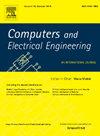并网风电转换系统基于Bi-LSTM-OTC-LADRC的增强型不确定性和扰动估计
IF 4
3区 计算机科学
Q1 COMPUTER SCIENCE, HARDWARE & ARCHITECTURE
引用次数: 0
摘要
功率限制和负荷降低是大型风力涡轮机在高风速下面临的主要挑战。控制器设计对于处理系统非线性和不可预测的风,实现稳定、环保的无振荡发电至关重要。在此背景下,本研究引入了可能在并网风能转换系统(G-CWECS)上实现的线性和非线性控制算法,以优化全局最大功率点(GMPP)的提取并改善有功和无功调节。这些策略的基础在于线性自抗扰控制(LADRC),它以依靠其观测器处理不确定性和干扰的能力而闻名。采用基于电流的双向LSTM (CBi-LSTM)和最优转矩控制(OTC) MPPT方法与LADRC相结合,从WECS中提取GMP。采用了一种强大的元启发式技术——抓鱼算法(CFA)来更新Bi-LSTM的权重。LADRC方法通过控制电网电流来调节有功和无功功率,保证了功率因数的统一。通过Matlab仿真和硬件在环(HIL)实验验证了实现的可行性。通过与mppt方法的比较,验证了推荐的Bi-LSTM-OTC-LADRC在风速变化条件下提取GMPP的有效性。此外,与PI、PID和SMC控制器相比,所提出的LADRC方法在管理不确定性和干扰方面具有鲁棒性。本文章由计算机程序翻译,如有差异,请以英文原文为准。
An enhanced uncertainty and disturbance estimator based on Bi-LSTM-OTC-LADRC of grid-connected wind energy conversion system
Power restriction and load reduction are key challenges for large wind turbines in high wind speeds. Controller design is crucial to handle system nonlinearities and unpredictable wind for stable, eco-friendly power generation without oscillations. In this context, this study introduces both linear and nonlinear control algorithms that might be implemented on a grid-connected wind energy conversion system (G-CWECS) to optimize the extraction of the global maximum power point (GMPP) and improve active and reactive power regulation. The foundation of these strategies lies in linear active disturbance rejection control (LADRC), which is well-known for its capability to handle uncertainties and disturbances, relying on its observer. The current-based bidirectional LSTM (CBi-LSTM) and optimum torque control (OTC) MPPT method integrated with LADRC are employed to extract GMP from WECS. A powerful metaheuristic technique, named catch fish algorithm (CFA), is utilized to update the Bi-LSTM weights. The LADRC approach is applied to regulate both active and reactive power by controlling grid currents, ensuring a unity power factor. Matlab simulation and Hardware-In-the-Loop (HIL) experiment are carried out to verify the feasibility of the implementation. Comparing with well-known-MPPT methods, the output outcomes prove the efficiency of the recommended Bi-LSTM-OTC-LADRC regarding GMPP extraction during wind speed variation. Additionally, it's proved that the proposed LADRC approach is robustness in terms of managing the uncertainties and disturbances compared to PI, PID and SMC controllers.
求助全文
通过发布文献求助,成功后即可免费获取论文全文。
去求助
来源期刊

Computers & Electrical Engineering
工程技术-工程:电子与电气
CiteScore
9.20
自引率
7.00%
发文量
661
审稿时长
47 days
期刊介绍:
The impact of computers has nowhere been more revolutionary than in electrical engineering. The design, analysis, and operation of electrical and electronic systems are now dominated by computers, a transformation that has been motivated by the natural ease of interface between computers and electrical systems, and the promise of spectacular improvements in speed and efficiency.
Published since 1973, Computers & Electrical Engineering provides rapid publication of topical research into the integration of computer technology and computational techniques with electrical and electronic systems. The journal publishes papers featuring novel implementations of computers and computational techniques in areas like signal and image processing, high-performance computing, parallel processing, and communications. Special attention will be paid to papers describing innovative architectures, algorithms, and software tools.
 求助内容:
求助内容: 应助结果提醒方式:
应助结果提醒方式:


